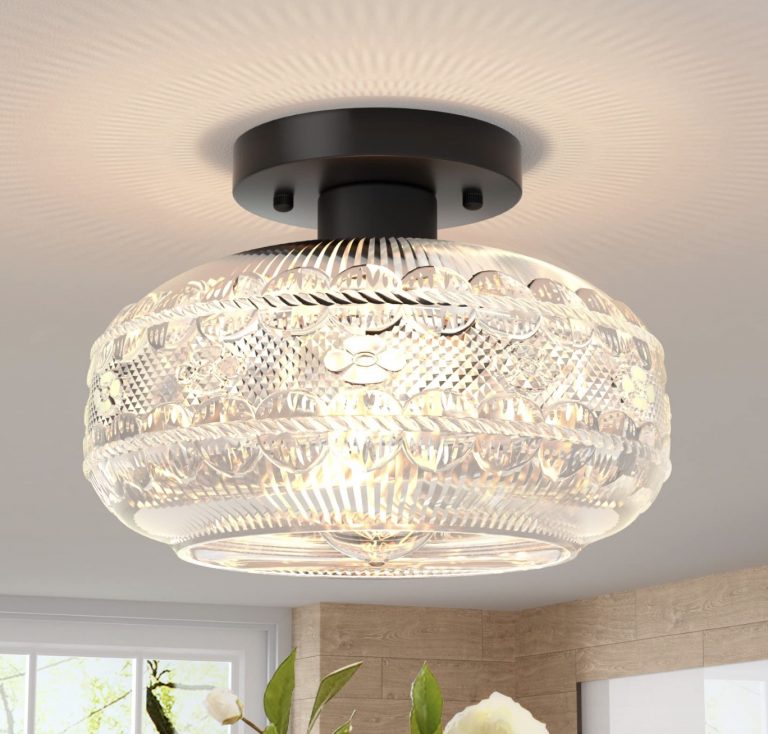Introduction to Flush Mount Ceiling Lights
Flush mount ceiling lights are a popular choice for homeowners due to their sleek design and ability to save space. Because these fixtures are mounted straight up against the ceiling, they provide a sleek appearance that complements a variety of contemporary interior design themes. If you’re looking to enhance your home’s ambiance, you can do a flush mount ceiling light too, by choosing the right one for your needs. Understanding the different aspects of these lights, such as design, technology, and maintenance, can help you make the best decision for your home.
Choosing the Right Style and Design
Selecting the appropriate style and design of flush mount ceiling lights is crucial to complement the overall décor of your home. Modern homes can benefit greatly from contemporary designs because they frequently have simple, minimalistic aesthetics and clear lines. On the other hand, vintage or industrial-inspired fixtures can add a unique character to a room. Additionally, the material and finish of the light fixture, be it brushed nickel, bronze, or glass, should align with other elements in the room to create a harmonious look.
Integrating Smart Technology
With advancements in smart home technology, flush mount ceiling lights can now be more than just a source of illumination. Many modern fixtures are compatible with smart systems like Alexa or Google Home, allowing you to easily control lighting intensity and color temperature. This integration can significantly enhance your lighting setup’s functionality and convenience. Imagine arriving home and adjusting your lights to the perfect setting with just your voice or a tap on your phone – it adds a high-tech, luxurious feel to any room.
Installation and Placement Tips
Proper installation and strategic placement of flush mount ceiling lights are vital to achieving the best lighting effects. Consider the room’s function; for instance, kitchen lighting should be bright and focused, whereas bedroom lighting can be softer and more diffused. Ensuring that the fixture is correctly aligned and secured will prevent any long-term issues and maintain safety. In living rooms, positioning lights near seating arrangements can create cozy reading nooks or TV-watching areas.
How to Install Flush Mount Ceiling Lights
- Turn off the power supply to the room where you are installing the light.
- Take off the old fixture and disconnect the wiring.
- Connect the new fixture’s wiring to the wiring in the ceiling. Ensure that you match the wires correctly to avoid any electrical mishaps.
- Mount the fixture base to the ceiling using screws. Double-check that it is properly fastened to prevent it from becoming loose over time.
- Attach the light cover and restore the power supply. Once installed, test the fixture to confirm it’s working properly.
Enhancing Aesthetic Appeal
By combining your flush mount ceiling lights with matching fixtures like wall sconces or table lamps, you may further improve their aesthetic appeal. Your spaces can gain depth and perspective by incorporating different lighting sources into a unified lighting system. To create a well-balanced and welcoming setting, a well-planned lighting design layers and blends ambient, task, and accent lighting.
Creating a Cohesive Lighting Scheme
- Layered Lighting: Combine ambient, task, and accent lighting. This approach ensures that the room is well-lit for different activities and creates a comfortable environment.
- Color Consistency: Use fixtures with similar color temperatures. Consistent lighting color enhances the room’s aesthetic coherence and prevents clashes that can cause visual discomfort.
- Design Harmony: Choose fixtures that complement each other in style, whether it’s modern, rustic, or industrial. Harmony in design creates visual unity and a polished look.
Maintenance and Care
Regular maintenance is essential to keep your flush mount ceiling lights in top condition. Cleaning the fixtures periodically and checking for any loose components can prevent larger issues down the line. Also, replacing outdated or dimming bulbs with modern, energy-efficient ones will help sustain the light quality. Neglecting maintenance can result in diminished performance and reduced longevity of your light fixtures.
Steps for Proper Maintenance
- Dust the fixture regularly using a soft cloth or feather duster. This simple step can prevent dust accumulation that might affect light output.
- Check for any loose screws or parts and tighten them if necessary. Ensuring that all parts are securely fastened will improve the fixture’s safety and durability.
- Replace any burnt-out bulbs with energy-efficient alternatives like LEDs. Gradually switching to LEDs can save energy and reduce your electricity bills.
- Clean the light cover with a mild cleaning solution and a soft cloth to maintain its appearance and performance. Proper cleaning ensures that the light output remains unobstructed.


0 Comments